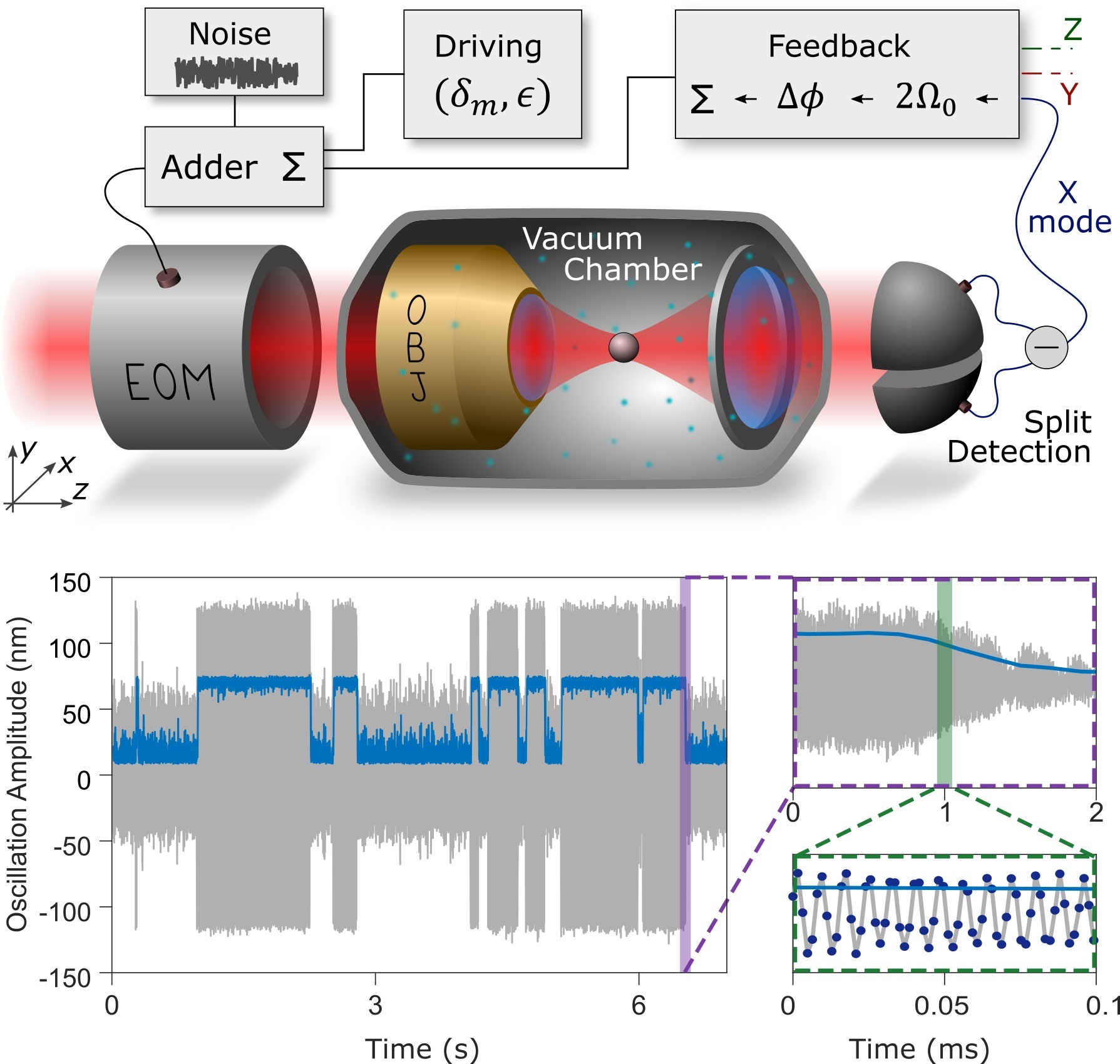09 May 2017
Nano-mechanical resonators are becoming increasingly important in the field of nanotechnology due to their outstanding properties as sensors, signal processors, and quantum systems. Their excellent performances are achieved mainly thanks to their low mass and high quality factor (Q). While low mass makes resonators responsive to ultra-weak perturbations, high Q implies low energy losses, leading to extremely sensitive measurements of force and masses.
An optically levitated nanoparticle in vacuum is a clear example of a 3D nano-mechanical resonator. Optimally decoupled from the environment and with an ultra-high Q, this resonator can outperform most clamped micro- and nanofabricated devices in terms of sensitivity. However, nonlinear behaviours pose limitations to these systems, degrading their performance in sensing applications. Therefore, new sensing schemes are required, and research is being carried out in order to exploit these nonlinearities and improve the capabilities of nano-resonators.
In a recent paper, published in Nature Communications, ICFO researchers Francesco Ricci, Dr. Raul Rica, Dr. Marko Spasenovic, Dr. Jan Gieseler, led by ICREA Prof. at ICFO Romain Quidant, in collaboration with researchers from ETH Zurich, have reported on the precise control of the nonlinear dynamics of this resonator, in particular in a regime where the system features bistability. Additionally, they have explored different nonlinear sensing schemes, including stochastic resonance, demonstrating unprecedented signal to noise ratio and quantitative agreement with analytical models.
The results of the study pave the way towards the development of novel sensor schemes and provide new capabilities in experimentally simulating complex stochastic nonlinear phenomena

Optical levitating nano-particle for stochastic bistable models
An ICFO study in Nature Communications demonstrates the full control of a nano-resonator in the nonlinear regime.

Schematic illustration of the experimental setup and an example of stochastic bistable dynamics.













